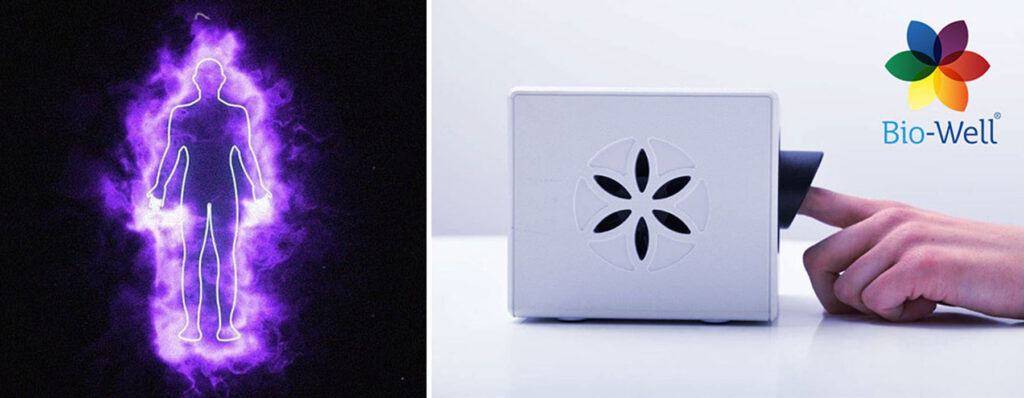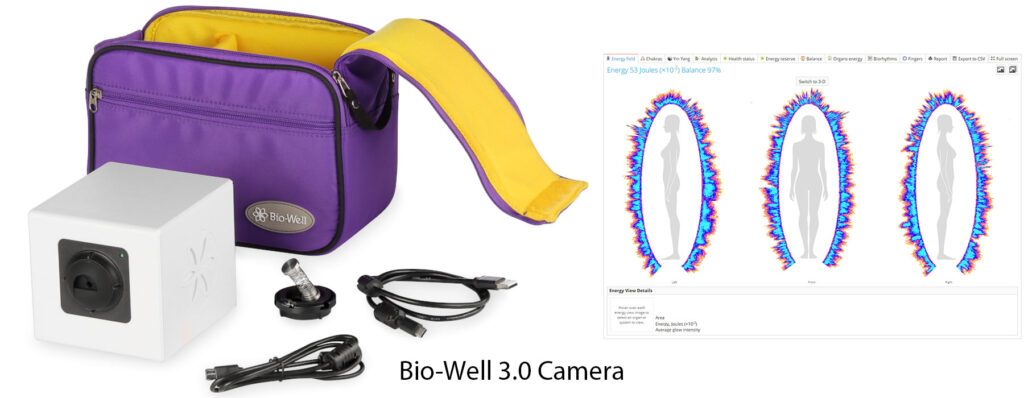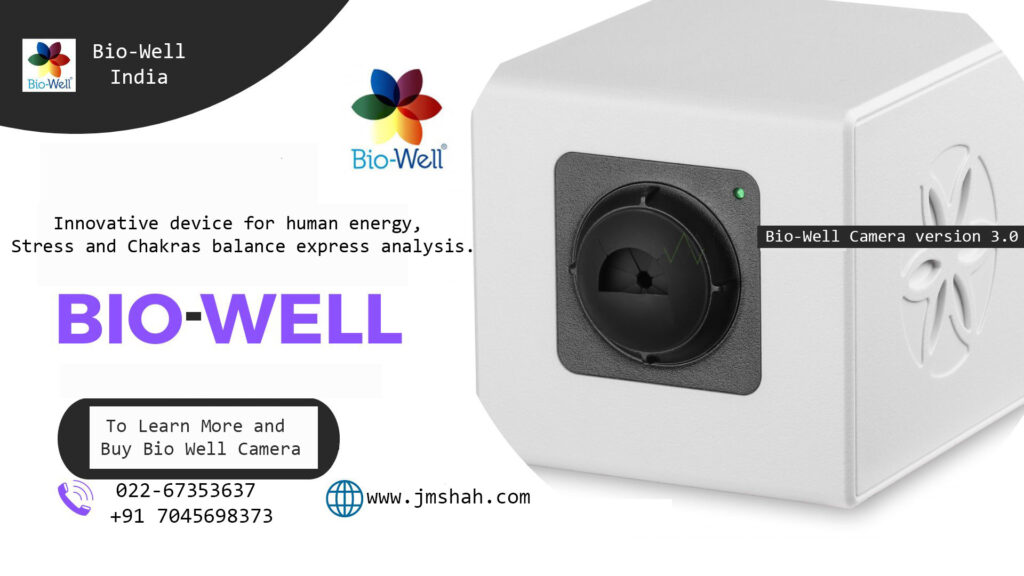GDV Camera: Understanding Gas Discharge Visualization Technology
The GDV camera represents a significant advancement in biofield measurement technology, offering new possibilities for health assessment and monitoring. This sophisticated device captures and analyzes the electromagnetic field around living organisms, providing valuable insights into their physiological and psychological states. The technology measures subtle energy patterns that conventional medical equipment cannot detect.
Modern developments have transformed traditional Kirlian Photography Camera techniques into more advanced systems like the Bio Well Camera, which delivers precise digital analysis of energy fields. These tools help healthcare practitioners evaluate stress levels, track treatment progress, and identify potential health issues before they manifest physically. The following sections explain how this technology works, its practical applications, and its role in preventive healthcare.
GDV Device from Bio-Well

What is Gas Discharge Visualization (GDV)?
Gas Discharge Visualization (GDV) represents a sophisticated computer-based technique for analyzing the gas discharge glow of biological objects placed within high-intensity electromagnetic fields. This technology operates by capturing and processing electromagnetic emissions from living organisms, providing quantitative measurements of physical and psychological well-being.
Definition and basic principles
GDV technology functions through a precise combination of physical components and electromagnetic principles. The system employs short voltage pulses with specific parameters:
| Technical Parameter | Specification |
|---|---|
| Pulse Duration | 10 microseconds |
| Frequency | 1024 Hz |
| Image Format | AVI or BMP |
| Brightness Range | 0 (black) to 255 (white) |
The process involves placing an object on a glass electrode connected to an electrical circuit. When activated, the device generates impulses of high-intensity electromagnetic fields, creating a sequence of gas discharges that are captured by a light-sensitive CCD matrix positioned beneath the electrode.
History and development
The evolution of GDV technology spans several centuries of scientific advancement:
- 16th-17th centuries: Initial publications on electricity and magnetic fields
- 1891-1892: D’Arsonval introduces high-frequency electrical current treatment
- 1949: Semyon and Valentina Kirlian begin comprehensive GDV research
- 1969: Development of stomach cancer diagnosis method using Kirlian photography
- Late 1970s: NASA validation studies
- 1981: First visualization of internal organs by Erasov
- 1996: First GDV test device creation
The Kirlian effect
The Kirlian effect, named after Semyon Kirlian and his wife, forms the foundation of modern GDV technology. This phenomenon involves recording and studying stimulated electro-photonic images around objects. The effect occurs when a weak electrical current is applied, causing gas ionization within the electrode system. The resulting corona discharge produces light at various wavelengths, which is then captured and analyzed.
The spatial distribution of the discharge glow contains valuable information about the object’s characteristics. For instance, variations in ion concentration directly affect the glow intensity and streamer breadth. Modern GDV devices enhance this basic principle through advanced optics, electronics, and computer algorithms, transforming the original Kirlian photography into a quantitative assessment tool.
The technique has gained recognition in multiple fields, including medicine, professional sports, and psychological assessment. Its validation through technical, toxicological, and clinical tests has led to its registration in the Russian Federation’s Ministry of Health public register of medical equipment, establishing its credibility as a diagnostic tool.
How GDV Technology Works
Modern GDV technology operates through a sophisticated combination of hardware and software components that work together to capture and analyze electromagnetic emissions. Understanding the technical framework helps appreciate how this advanced system transforms subtle energy patterns into measurable data.
GDV camera components
The core hardware of a GDV camera consists of several precision-engineered elements working in harmony. At its heart lies a specialized optical system featuring a quartz electrode with conductive coating and a high-sensitivity CCD camera. The system operates with the following technical specifications:
| Parameter | Specification |
|---|---|
| Voltage Amplitude | 1000-4000V |
| Pulse Duration | 10 microseconds |
| Frequency | 1024 Hz |
| Power Consumption | 35W maximum |
| Image Resolution | 800 x 600 pixels |
Image capture process
The image capture sequence involves a precise series of steps utilizing electromagnetic stimulation. When a subject places their fingertip on the dielectric plate, the system generates a controlled electrical field with specific parameters:
- Pulse current: 10 microamperes
- Voltage intensity: 10 kilovolts
- Stimulation duration: Less than 1 millisecond
- Repetition frequency: 1024 hertz
This carefully calibrated process creates a corona discharge around the subject’s fingertip, which the CCD camera captures through the glass electrode. The resulting images, known as GDV-grams, represent the photon and electron emissions from the subject’s biological field.
Data analysis and interpretation
The captured images undergo sophisticated computer analysis using specialized software that transforms raw data into meaningful health insights. The analysis process examines multiple parameters:
- Intensity Analysis: Measures the strength and consistency of the corona discharge
- Area Calculation: Determines the total size of the emission field
- Fractality Assessment: Evaluates the complexity and pattern distribution
- Symmetry Measurement: Compares left and right side emissions
The software divides each fingertip image into sectors corresponding to different body systems, based on traditional Chinese medicine meridians. These sectors undergo detailed analysis to generate quantitative data about various physiological and psychological parameters. The system processes this information to create detailed reports about energy distribution, stress levels, and organ system functionality.
Advanced algorithms compare the captured images with calibrated standards, producing numerical values for key parameters such as entropy and autonomic tone. These measurements provide objective data about the subject’s current state, allowing practitioners to track changes over time and assess the effectiveness of various interventions.
Applications of GDV in Health and Wellness
Recent advancements in bioelectrography have established Gas Discharge Visualization as a valuable tool in healthcare applications, offering comprehensive insights into various aspects of human health and wellness.
Early disease detection
GDV technology demonstrates particular effectiveness in early disease detection, especially in diabetes screening. Clinical studies have shown promising results in non-invasive diabetic assessment, with the following accuracy rates:
| Measurement Type | Combined Accuracy | Sensitivity | Specificity |
|---|---|---|---|
| Fasting | 65.88% | 77.42% | 34.78% |
| Postprandial | 68.23% | 76.09% | 58.97% |
The system’s ability to detect subtle energy field variations makes it particularly valuable for identifying potential health issues before they manifest as physical symptoms.
Monitoring treatment responses
The GDV camera serves as an effective tool for monitoring patient responses to various medical interventions. Clinical applications include:
- Tracking post-surgical recovery progress
- Evaluating cancer treatment effectiveness
- Assessing physiotherapy outcomes
- Monitoring energy healing interventions
The technology’s ability to capture real-time changes in the body’s energy field provides healthcare practitioners with immediate feedback on treatment efficacy.
Stress level assessment
GDV technology offers sophisticated stress measurement capabilities through the analysis of autonomic tone and entropy levels. The Activation Coefficient (AC) provides quantitative stress assessment on a scale of 0-10:
- 2-4: Normal, balanced state
- Below 2: Deep meditation or potential depression
- Above 4: Elevated stress levels
This measurement system enables practitioners to objectively evaluate psychological and physiological stress impacts, making it particularly valuable for preventive healthcare strategies.
Comparing therapies
The technology’s ability to measure treatment outcomes has proven particularly valuable in comparing different therapeutic approaches. Research utilizing GDV cameras has demonstrated measurable improvements in patients receiving various treatments:
Osteopathic treatments have shown significant benefits, including:
- Increased fingertip fluorescence area
- Enhanced average intensity measurements
- Reduced stress levels
- Improved blood pressure readings
The system’s capacity to provide objective measurements of therapeutic outcomes enables healthcare practitioners to evaluate and compare different treatment modalities effectively. Studies have documented positive results across various interventions, including acupuncture, qigong, music therapy, and massage, with measurable improvements in patients’ energy fields and overall well-being.
The technology’s non-invasive nature and real-time analysis capabilities make it particularly valuable for ongoing treatment monitoring. Healthcare providers can track changes in patients’ biofield parameters throughout the course of treatment, allowing for timely adjustments to therapeutic protocols based on objective measurements rather than subjective assessments alone.
Advantages and Limitations of GDV Technology
The comprehensive evaluation of GDV technology reveals both significant advantages and notable limitations that influence its application in clinical and research settings. Understanding these aspects is crucial for healthcare practitioners and researchers considering its implementation.
Non-invasive nature
The GDV camera’s most significant advantage lies in its completely non-invasive approach to health assessment. The system operates with remarkably low electrical parameters:
| Parameter | Specification | Safety Impact |
|---|---|---|
| Current Flow | Microamps | No tissue depolarization |
| Pulse Duration | <1 millisecond | Minimal exposure |
| Contact Time | Seconds only | Quick assessment |
| Radiation Level | None | Safe for repeated use |
This safety profile makes it particularly suitable for regular monitoring and screening applications, especially in situations where traditional diagnostic methods might be too invasive or impractical for frequent use.
Real-time analysis
The technology’s capability to provide immediate feedback represents a significant advancement in biometric assessment. The real-time analysis features include:
- Instantaneous data processing of electrophotonic emissions
- Dynamic visualization of energy field changes
- Immediate comparison with baseline measurements
- Rapid assessment of intervention effects
The system’s ability to process and display results immediately enables practitioners to make quick adjustments to treatment protocols and monitor immediate responses to therapeutic interventions.

Potential for preventive healthcare
GDV technology demonstrates promising capabilities in preventive healthcare through its ability to detect subtle changes in the body’s energy field before physical symptoms manifest. The system’s preventive applications include:
- Early Detection Capabilities:
- Identification of energy imbalances
- Monitoring of stress patterns
- Assessment of organ system functionality
- Tracking of treatment responses
- Wellness Monitoring:
- Regular assessment of overall health status
- Evaluation of lifestyle intervention effects
- Measurement of stress adaptation
- Analysis of recovery patterns
The technology’s ability to provide objective measurements of subtle physiological changes makes it particularly valuable for long-term health monitoring and preventive intervention planning.
Scientific validation challenges
While GDV technology shows promise, several significant challenges exist in its scientific validation:
- Standardization Issues
- Variation in measurement protocols
- Differences in interpretation methods
- Need for unified assessment criteria
The scientific community has identified several areas requiring further investigation:
- Methodology Refinement:
- Development of standardized protocols
- Establishment of normative databases
- Creation of validated interpretation guidelines
- Clinical Validation:
- Need for larger-scale studies
- Requirement for multi-center trials
- Importance of peer-reviewed research
The technology’s integration into mainstream healthcare faces challenges related to reproducibility and standardization. Current research indicates that while the GDV camera shows promising results in various applications, more robust scientific validation is needed to establish its role in clinical diagnostics.
The biometric method based on GDV technology represents a significant step forward in non-invasive health assessment, particularly in areas where traditional diagnostic methods may be limited. However, its full potential can only be realized through continued research and validation efforts, combined with standardized protocols and comprehensive training for practitioners.
The system’s ability to provide real-time, non-invasive measurements offers unique advantages in monitoring both immediate and long-term changes in health status. Yet, the technology’s broader adoption depends on addressing current validation challenges and establishing stronger scientific evidence for its various applications.
Conclusion
GDV camera technology stands as a remarkable advancement in biofield measurement, transforming the fundamental principles of Kirlian photography into a sophisticated digital health assessment tool. The system’s ability to capture and analyze electromagnetic emissions through precise technical parameters has created new possibilities for healthcare practitioners, particularly in early disease detection and treatment monitoring. These capabilities, combined with its non-invasive nature and real-time analysis features, make GDV technology a valuable addition to modern healthcare practices.
The future of GDV technology holds significant promise, especially as research continues to validate its applications across various healthcare domains. While current scientific evidence supports its use in stress assessment and treatment monitoring, additional standardization efforts and clinical studies will strengthen its position in mainstream medicine. Healthcare practitioners and researchers who embrace this technology while acknowledging its current limitations contribute to its evolution as a comprehensive health assessment tool, potentially reshaping approaches to preventive healthcare and personalized treatment strategies.

I am interested in the gdv device – please send me info..